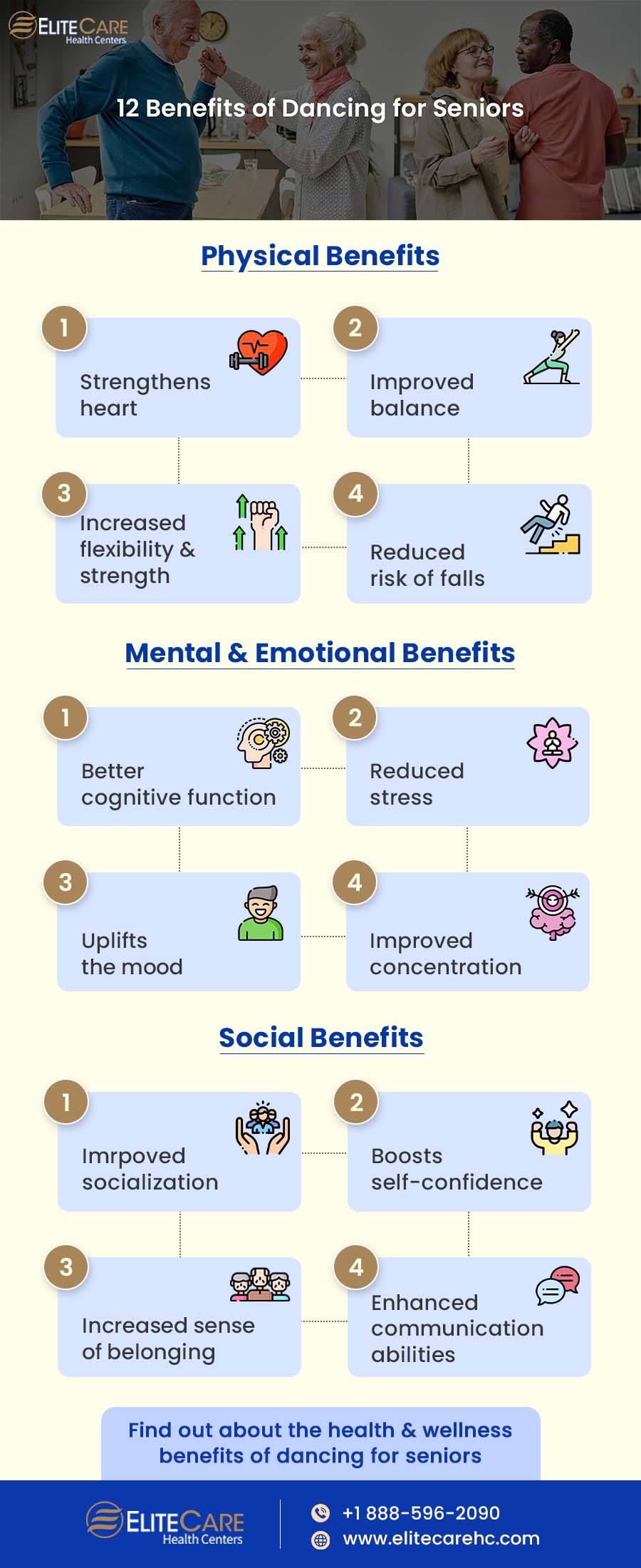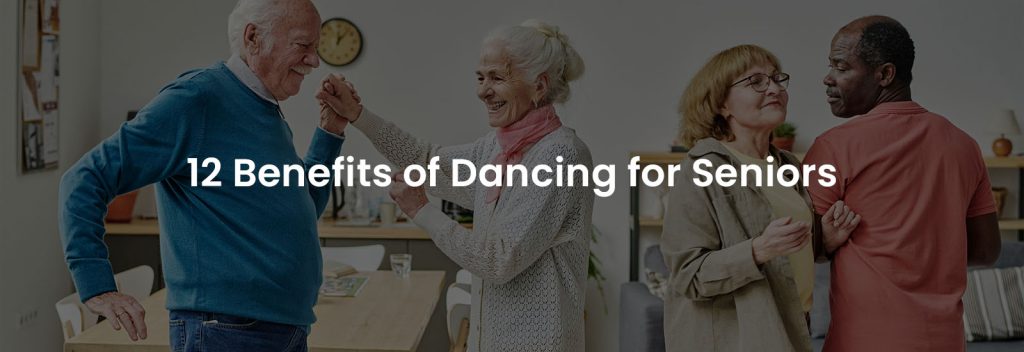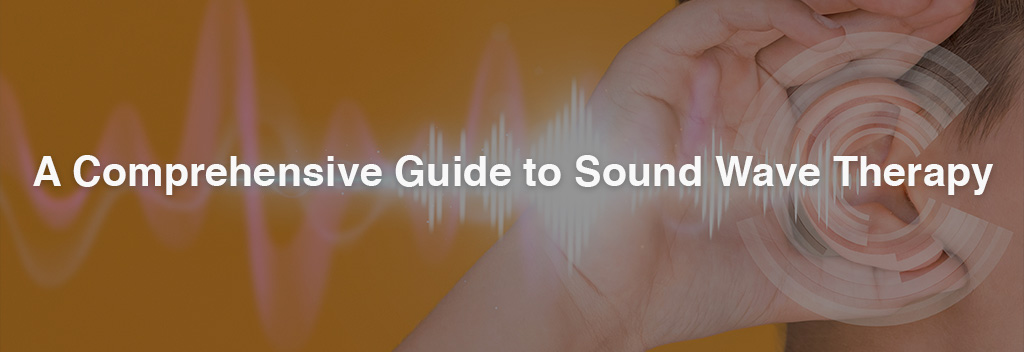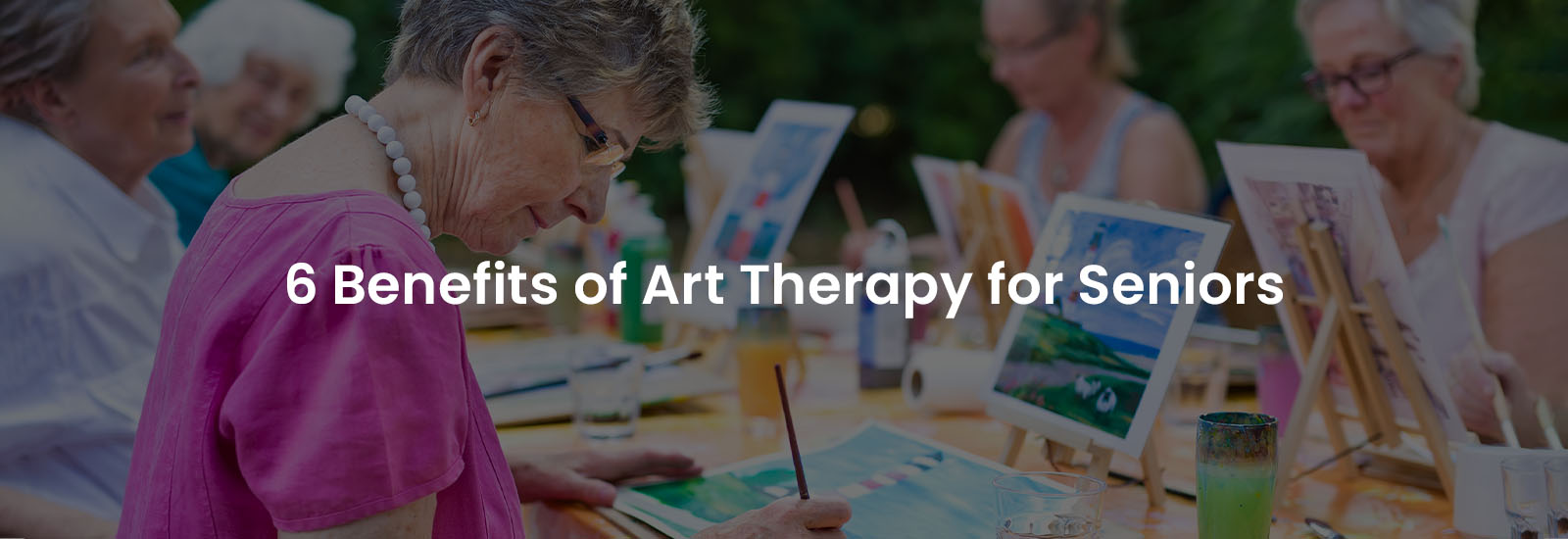
Dancing is a fun and beneficial activity for seniors. The benefits of dancing are numerous, including improved physical fitness and mental and emotional well-being. Dancing also helps seniors to socialize and reduces the feeling of loneliness. Whether a senior is trying to stay active and healthy or simply looking for a fun and social activity, dancing is a perfect option. Let’s find out the health benefits of dancing and how it can be a fun and effective exercise for seniors‘ overall well-being.
The benefits of dancing for seniors are numerous, including improved physical fitness, mental and emotional well-being, and socialization. Dancing is a fun and effective exercise that can improve seniors’ overall health and well-being.
Physical Benefits
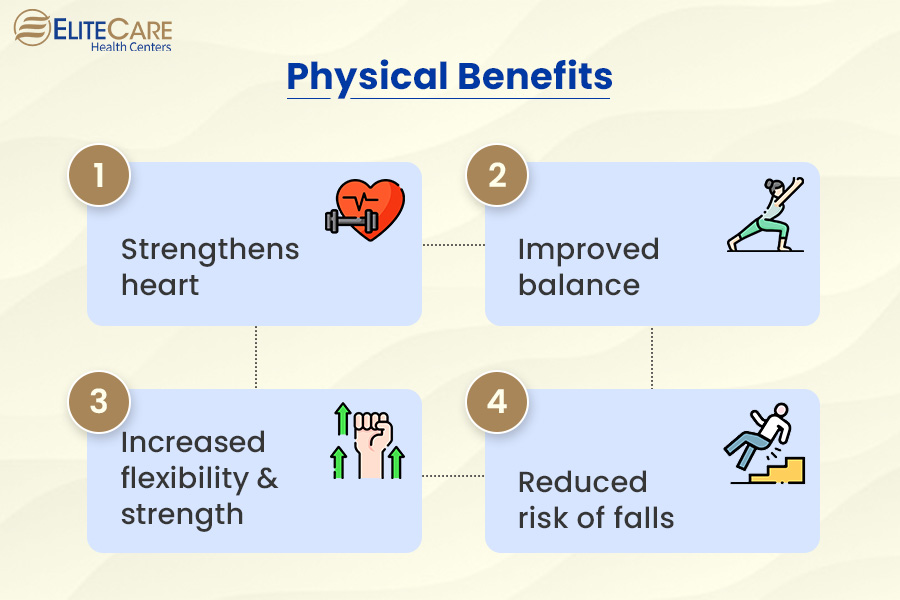
Strengthens Heart
Dancing is a form of aerobic exercise, which is particularly beneficial for cardiovascular health. It increases heart rate and blood flow, which boosts the overall function of the cardiovascular system. As the heart pumps blood more efficiently, it can help lower blood pressure, reduce the risk of heart disease, and improve circulation.
Improved balance and coordination
Dancing requires movement and coordination of different body parts, such as the feet, legs, arms, and torso. Therefore, it helps improve balance and coordination by challenging the body to maintain stability while moving in different directions. This helps improve their ability to maintain stability and sense their body’s position in space. This can be especially beneficial for seniors who suffer from decreased proprioception due to age-related conditions such as arthritis.
Increased flexibility and strength
Dancing involves physical movements that use different muscles in the body. These movements can help strengthen and tone different muscle groups. For example, stretching and reaching movements can improve flexibility in the legs, arms, and spine. Twists turn, and other dynamic movements can help to build strength in the core and legs.
Additionally, many dance styles incorporate movements that require the use of small muscle groups, such as the feet and ankles, which can help to improve overall muscle tone.
Reduced risk of falls
Dancing requires a combination of balance, coordination, and strength, which can help improve overall stability and reduce the risk of falls. Dancing also helps maintain a healthy weight and keeps seniors limber and active.
Mental & Emotional Benefits
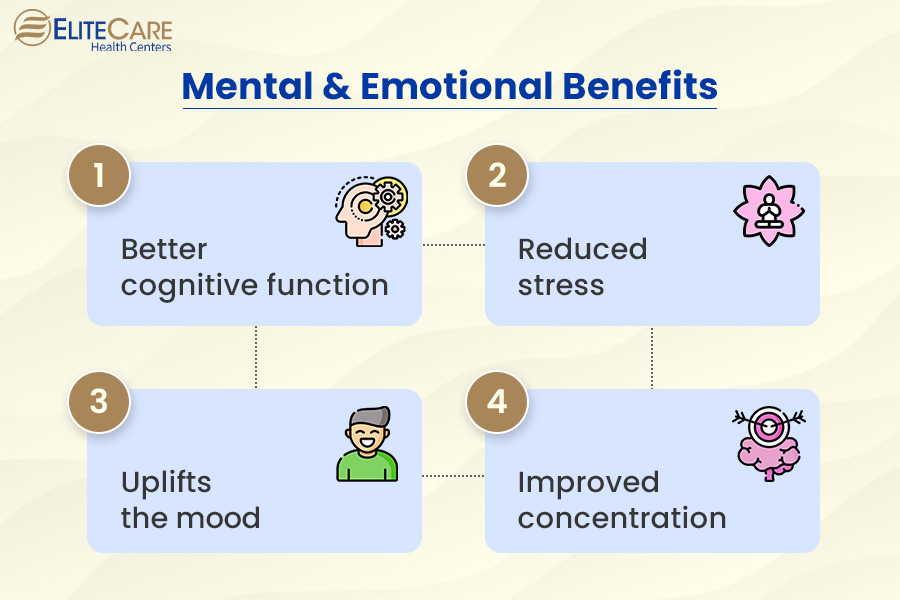
Better memory and cognitive function
Dancing has been shown to affect memory and cognitive function in seniors positively. It requires memory and mental skills, such as learning choreography and remembering dance steps. Therefore, it can help improve overall cognitive function and memory, especially for seniors at risk of losing their mental acuity. Dancing is an effective way to keep the mind active and engaged, thereby preventing mental decline and improving the health benefits of dancing for seniors.
Reduced stress and anxiety
Dancing is known to have stress-relieving benefits. The physical and mental exertion involved in dancing can release endorphins, chemical signals in the brain that promote happiness and relieve pain.
Besides, dancing also works as a form of creative expression and helps seniors feel more socially connected and engaged.
Uplifts the mood
Dance is a creative activity that uplifts the mood and releases negative emotions. The act of dancing provides a break from worries and relaxes the mind.
Additionally, the sense of accomplishment and self-expression that comes with learning and performing a dance can also bring positivity.
Improved concentration and focus
Dancing can help improve cognitive function and reduce seniors’ risk of cognitive decline. This is because dancing requires seniors to pay attention to the dance’s music, choreography, and timing which helps to sharpen their focus and concentration. These benefits also extend to carry over other activities such as reading, problem-solving, and decision-making.
Social Benefits
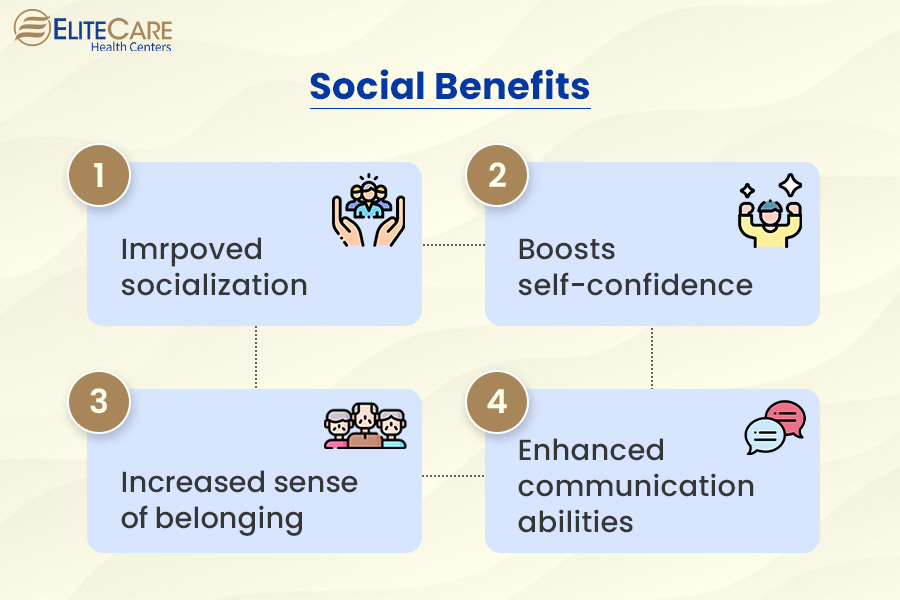
Improved socialization
Dancing is a great social activity that allows seniors to interact with others and form new friendships. It also helps seniors enjoy a sense of community in a group setting that can allow socializing.
Boosts self-confidence
Dancing boosts self-confidence and provides seniors with a sense of self-expression. With dance, seniors can learn new skills and achieve new accomplishments. Learning and performing a dance can give seniors a sense of pride and boost their self-esteem.
Increased sense of belonging
With age, seniors may begin to feel disconnected from the world around them, but attending classes or going to social dance activities can help them find a way to connect with others. Dancing can create a sense of closeness and connection that can be difficult for seniors to find in other social settings.
Enhanced communication abilities
Dancing can also help seniors enhance their communication abilities by providing opportunities for nonverbal communication through movement and facial expressions. It also helps seniors improve their verbal communication skills with social interaction opportunities.
Suggestions for Seniors to Get Started
For seniors trying to get started with dancing, it is wise to take a few key steps to ensure a positive experience.
a. Find a Dance Class That Fits Your Needs
Seniors should find a dance class suitable for their abilities and interests. Researching dance classes, such as ballroom, Latin, contemporary, etc., can help seniors find a class they will enjoy and feel comfortable participating in. Many dance studios, community centers or health and wellness centers can offer classes specifically designed for seniors, which can be a helpful place to start.
b. Wear the Right Shoes
Wearing the right shoes can prevent injuries and ensure comfort while dancing. Seniors should look for dance shoes with low heels, proper support, and non-slip soles.
c. Take it Slow
When starting, seniors should take it slow and not try to do too much too soon. Starting with a beginner-level class and gradually increasing the intensity and complexity of the dance moves is a good way to build strength, endurance, and confidence. Seniors should also be mindful of their limitations and not push themselves too hard.
d. Listen to Your Body
If seniors feel pain or discomfort while dancing, they should stop and rest. Seniors should also be mindful of any pre-existing medical conditions and talk to their doctor before starting a dance class. It’s also important for seniors to keep hydrated and to take breaks as needed.
Conclusion
According to a study, dancing improves muscular strength, endurance, balance, and overall functional fitness in older adults. Seniors interested in dancing should find a class that works for them. They can look at resources such as community centers, parks, and online classes. Community centers often offer a variety of dance classes for seniors, and some parks also host free or low-cost dance classes. Online classes are also viable for seniors who prefer to dance at home or have limited mobility. Seniors should consult a doctor and get themselves checked before starting a dance class. Visit our physicians at EliteCare health and wellness center or contact us to schedule an appointment.
